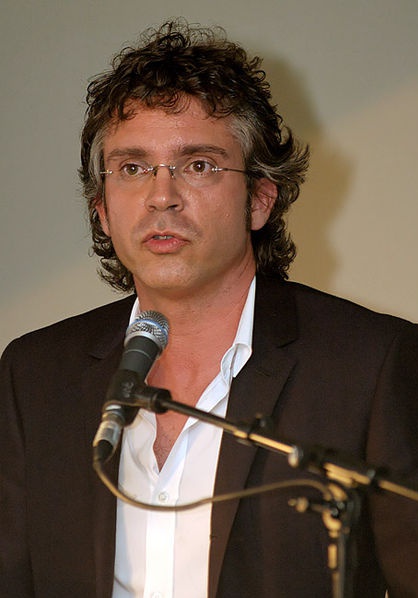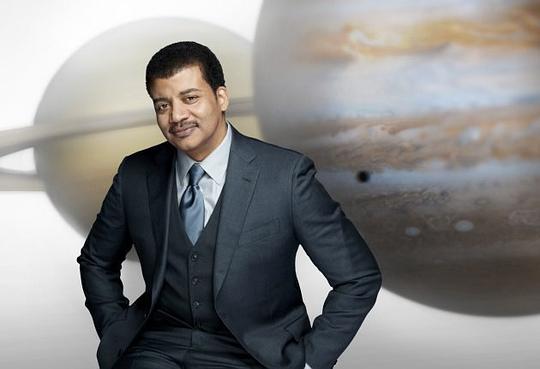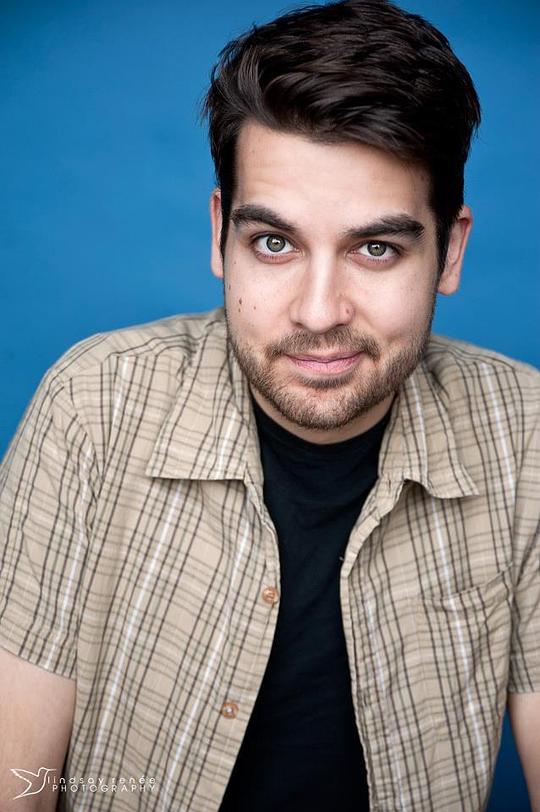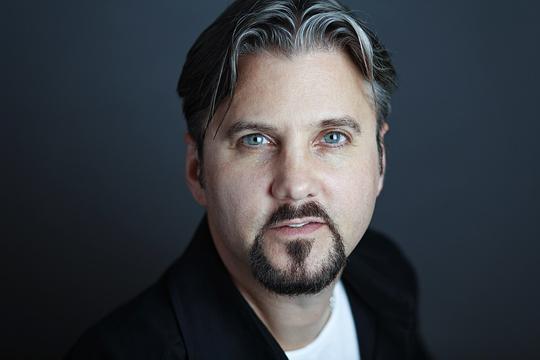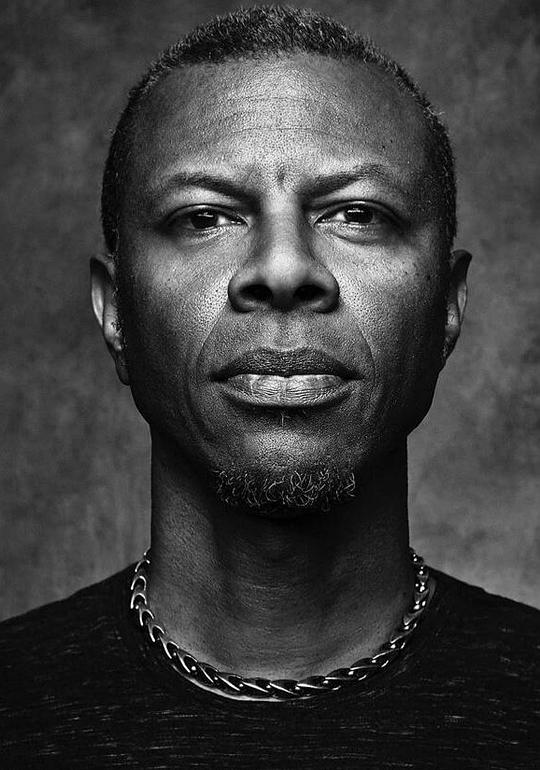宇宙时空之旅 Cosmos: A SpaceTime Odyssey(2014)

又名: 宇宙:一场时空漫游 / 宇宙:时空之旅 / 宇宙:时空奥德赛 / 探索宇宙(港)
编剧: 安·德鲁扬 卡尔·萨根 Steven Soter Johnny Otto
主演: 尼尔·德格拉塞·泰森 彼得·迈克尔 安德烈·索格利扎索 菲尔·拉马 阿曼达·塞弗里德 塞思·麦克法兰
类型: 纪录片
制片国家/地区: 美国
上映日期: 2014-03-09(美国)
集数: 13 单集片长: 45分钟 IMDb: tt2395695 豆瓣评分:9.7 下载地址:迅雷下载
简介:
- 《卡尔·萨根的宇宙》的更新重制版。
演员:
影评:
有朝菌,朝生而夕死,乃不知日夜 有蟪蛄,春生而夏死,乃不知四季 《逍遥游》里写过一个大致如此的故事 故事里还有一只灵龟 对该灵龟来说 五百年一季候 两千年一春秋 小时候看的蔡志忠 这个故事至今未被磨灭 人站在菌蛄和灵龟之间 前者渺若尘埃 弹指一挥 后者睥睨光阴 几至永恒 以人观之 朝菌和蟪蛄哪里配谈人生 灵龟则是人神话般的梦想 而在空间尺度上 囿于千百年来的技术桎梏 万物都被拉平在同一块天地之间 纵然是飞行 在人之眼中也不过是一种更便捷的移动方式 在地面奔驰 一样可以追云逐月 时空于我们的先祖来说 是诗情画意 是艺术命题 仅当我们谈及朝菌和蟪蛄时 它们因短暂而可悲的一生不禁令人俯身喟叹 当时我觉得 这种喟叹不过一厢情愿 朝菌不知日夜 蟪蛄不知四季 很可能这才使它们的一生得以坦然和丰满 无知无欲求 无觉无烦恼 哪里像人类 文化和科技把上下五千年都连接进了自己短暂的一生 即便是古人 也认得灵龟这种造物 与之相较 人之一生也不过须臾 加上求长生之术而不得的失落 很难讲人与菌蛄谁更快活 Cosmos 值得一看 还有类似的 Travel to the edge of the universe 我知道一些对这类电影 甚至是这类论题毫无热情甚至有些排斥的朋友 在宇宙之下 对人之生命和处所的知觉令他们感到深深的挫败和虚无 我理解这种心态 得知自己奋斗一生 在稍稍高远一些的视角下 可能不过是将一粒尘埃推动了一毫米 任谁都会难以振奋 智慧令我们成为万灵之长 令我们发问和探索 可探索到的事实不过是一再刷新和巩固人类之于宇宙的偶然和渺小 在我看来 对现状心有不甘是作为智慧的理所当然 对我们一直以来独特、唯一、无上的自觉的否定令我们难以承受 有限的世界更有助于我们成长快乐 但遗憾的是技术却一直在带着我们背离期待的方向 人生识字忧患始 苦苦求索并不能有助于解决智慧的诅咒 求索本身 更是诅咒的一部分 Cosmos 里有两个地方令我印象深刻 一个是宇宙年历和地球年历 将无论138亿还是45亿年压缩到一年365天之内 人类文明都是出现在跨年夜的最后几秒 这样的直观令人难以平静 从钻木取火到探路火星 令我们自己叹为观止的文明可能只不过是宇宙的一次心跳 一次呼吸 一次眨眼 甚至更细微 另一个 是 Neil 娓娓讲述中的阿波罗计划 在冷战时期的美苏军备竞赛中 我们有两个超级大国都掌握了足以毁灭文明的武器 并且这两个大国互相敌对 那可能是一场我们不敢想象、无可挽回的灾难 所幸最终它并未发生 将目光转向了高级火箭推进(说是航天,实际上还是为了运载弹头)并率先成功的美国人 史诗性地将人类的足迹踏在了月球表面 在这场技术的耀武扬威中 一张照片却意外并永远地开启了人类对于整个文明的思考 那是漂浮在黑暗的宇宙帷幕之下 孤零零的、蓝色的、我们的地球
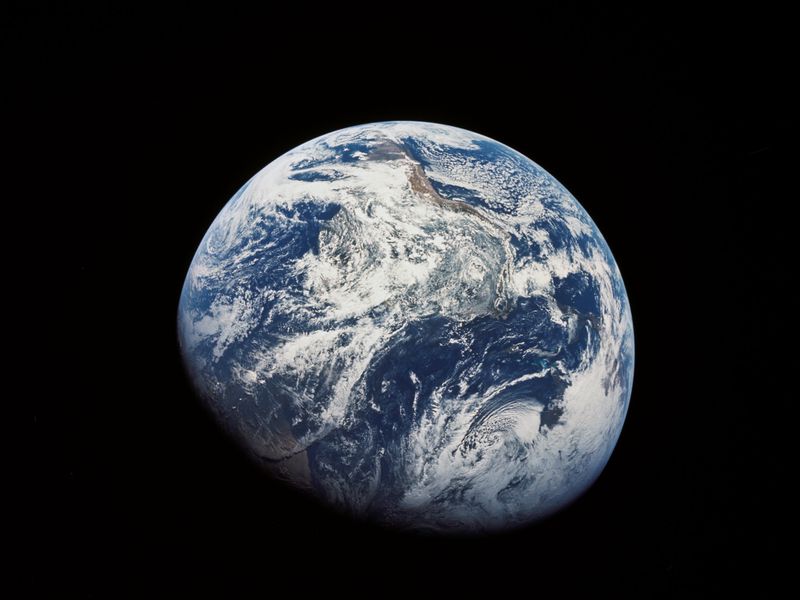
第一次 我们开始意识到在这个渺小的星球上 我们是一个共同体 它的命运即是全人类共同的命运 我愿意相信当时的元首们在看到这张照片时会心有触动 遗憾的是 在其后关于碳排放、温室效应、全球变暖的章节中 很明显这触动并没能很持久和深入 一张从月球上得到的自拍照 或许在某种程度上让地球得以从核武器互射这种急性末日中暂时脱身 现有的研究认为 碳在大气中的含量在超过了一定程度之后 给气候带来的影响将是不可逆的 很遗憾 以部分科学家之外的人类的目光来看 我们并不觉得这是个问题 低碳成了各种广告的噱头 但却没有一个是出于对我们家园真正的关怀 地球很可能在温室效应这种慢性末日中奄奄一息 不过没关系 反正我们早就做好了掏空然后弃掉地球 飞向新家园的准备 在人类对自己未来的规划里(如果短视如人类也有过任何规划的话) 拯救地球的代价并不比弃掉它更划算 同所有科普类纪录片一样 Cosmos 一样落脚于对人类命运的关怀 科学在某种程度上就像技术纪元的新宗教 但又与宗教完全不同 它用真理和事实来引导我们探索并敬畏 并最终做正确的事情 Cosmos 的文案品质不够稳定 想象之舟的设定在前段看起来略显浮夸 不看到后面便不太能领会它的妙处
- 第一集:宇宙起源:布鲁诺是埃及赫尔墨斯原始宗教的信徒,在他的著作里,太阳也已经不再是宇宙的中心。他相信宇宙的无限,认为无限个宇宙中有无数个世界。在布鲁诺的宇宙里,世界不再局限于几个封闭的水晶天球,它变的丰富、变的生动,无数个世界自成体系,世界在运动中得到更新、得到再生。教皇贝拉名为布鲁诺定下八大异端罪状,包括反对天主教思想、反对三位一体、反对基督的神性、相信轮回转生、相信无尽宇宙思想等等,甚至还包括质疑圣母玛利亚的童贞受孕。在文件里,对日心说的支持并未成为审判的理由——事实上和那八大异端罪状比起来,支持日心说的罪过实在显得太过轻微。
第二集:物种起源:达尔文祖父祖父伊拉斯谟·达尔文是英国医学界权威,曾写有《生命学》、《植物学》等著作。伊拉斯谟认为有机体内有让生物向高级阶段发展的内在力量,并推测生命起源于海洋,对日后的达尔文产生了重要影响。在达尔文研究物种演化时,物种行为的无情性引伸出的社会意义,经常被非国教论者及无神论者视作攻击英国国教会的理论的手段。达尔文更认为宗教信仰其实是生物族群的生存策略,虽然此时他仍然相信神是最终的自然法则制定者。在1851年,他的女儿安尼逝世后,达尔文的信仰渐减,并倾向怀疑主义。这时虽然他仍继续协助进行一些教会事务,但已经不会在星期日上教会。他倾向相信痛苦是自然法则,多于神的试练。当他被问及他的宗教取向时,他指出他从来不是无神论,但不可知论是对他的心思更准确的描述。达尔文在自传里亦曾表示,福音书的真确性存疑,他也没有充足证据相信基督教是神的教义。
第三集:万有引力:哈雷出生于伦敦肖迪奇一个富有家庭,他的父亲来自德比郡,是一个富裕的肥皂制造商。1679年5月,他返回英国。他发表了包含341颗南天恒星的详细数据的《南天星表》,因为这份星表加上附属的星图,当选为英国皇家学会院士。爱德蒙·哈雷于1686年发表了关于他的第二篇论文,这篇论文的内容是信风和季雨。他确定了太阳的热能是大气层运动的动力,他还建立了气压与高度之间的关系。1693年,哈雷发表了一篇关于人寿保险的文章。他基于一个德国小城的完整数据纪录,来分析死亡年龄。约翰·格朗特随后推广了他的研究工作,该成就现在被视为人口学史上的一件大事。
1682年,爱德蒙·哈雷在伊斯林顿定居。在大多数时间里,他持续观察月球,并试图证明开普勒定律。1684年8月,他去剑桥与艾萨克·牛顿讨论这个问题,牛顿称已在一篇论文中解决了这个问题,但没有发表。哈雷要求看这篇论文,却找不到了。他说服牛顿再写一篇,于是牛顿用两年时间写成了自己最伟大的著作《自然哲学的数学原理》即万有引力,皇家学会最初承诺会付钱出版该书,但书写成之后反悔哈雷只好自己出钱出版该书。
第四集,相对论:相对论的产生主还有马赫定律与费曼几何,不止是法拉第的电磁场和麦克斯韦方程式 ,事实上广义相对论是对微积分 经典力学 电动力学 线性代数 微分几何的集大成者。
第五集:光的世界:有记录的小孔成像最早由墨子发现,伊斯兰教哈里发的包容保留了古希腊文化,为欧洲文艺复兴打下基础。最初牛顿通过三菱镜绘制色谱,而威廉赫歇尔在1800年通过用温度计测量太阳光谱的各个部分,结果发现,在将温度计放在光谱红端外测温时,温度上升得最高,而那儿却完全没有颜色。于是他得出结论:太阳光中包含着处于红光以外的不可见光线,即红外辐射。
威廉赫歇尔也被誉为“恒星天文学之父”,威廉·赫歇尔亦编制了一份详尽的“星云”列表,与及一份双星列表。他首先发现大部分双星并非貌合神离的光学双星,而是互相具引力关系的。从研究恒星的自行,他也首先发现太阳系正在宇宙中移动,还指出该移动的大致方向。还提出提出银河呈圆盘状。他的儿子,约翰·赫歇尔于1816年开始研究天文学,在1821年至1823年他与詹姆士·卲斯重新校验他父亲编制的双星星表。1833年,约翰·赫歇尔前往南非测量南天的恒星。两年后,他观测了哈雷彗星回归。约翰赫歇尔死后,英国对其进行了国葬。
约瑟夫·冯·夫琅和费又译作弗劳恩霍夫,德国物理学家,主要贡献集中在光学方面。夫琅和费11岁成为孤儿,在慕尼黑的一家玻璃作坊当学徒。1801年,这家作坊的房子崩塌了,巴伐利亚选帝侯马克西米利安一世亲自带人将其从废墟中救起。马克西米利安一世十分爱护夫琅和费,为其提供了书籍和学习的机会。8个月后,夫琅和费被送往著名的本讷迪克特伯伊昂修道院的光学学院接受训练,这所本笃会修道院十分重视玻璃制作工艺。到1818年,夫琅和费已经成为光学学院的主要领导。由于夫琅和费的努力,巴伐利亚取代英国成为当时光学仪器的制作中心,连迈克尔·法拉第也只能甘拜下风。现弗劳恩霍夫应用研究促进协会是德国也是欧洲最大的应用科学研究机构,成立于1949年3月26日,以德国科学家、发明家和企业家约瑟夫·弗劳恩霍夫的名字命名。弗劳恩霍夫协会下设80多个研究所,年经费10亿欧元,总部位于慕尼黑。
第六集:微观世界
水熊虫是动物界的缓步动物门,主要生活在淡水的沉渣、潮湿土壤以及苔藓植物的水膜中,少数种类生活在海水的潮间带。有记录的大约有750余种,其中许多种是世界性分布的。在喜马拉雅山脉(6000m以上)或深海(4000m以下)都可以找到它们的踪影。是第一种已知可以在太空中生存的动物。
光合作用(Photosynthesis)是植物、藻类等生产者和某些细菌,利用光能,将二氧化碳、水或是硫化氢转化为碳水化合物。光合作用可分为产氧光合作用和不产氧光合作用。通过食用,食物链的消费者可以吸收到植物所贮存的能量,效率为10%左右。对大多数生物来説,这个过程是他们赖以生存的关键。而地球上的碳氧循环,光合作用是其中最重要的一环。
光合作用公式
12H2O + 6CO2 +阳光→ (与叶绿素产生化学作用); C6H12O6 (葡萄糖) + 6O2 + 6H2O
第七集:地球年龄
克莱尔·卡梅伦·帕特森美,国地质学家和地球化学家,出生于美国艾奥瓦州米切尔维尔,芝加哥大学博士,在加州理工学院任教。帕特森与乔治·蒂尔顿合作,改进铀铅测年法,发明了铅铅测年法。通过测定代亚布罗峡谷陨石中铅的同位素的含量,他在1956计算出地球的年龄约为45.5±0.7亿年,该测量精度至今无人能及。帕特森早在1940年代还是芝加哥大学研究生的时候就发现自己的样品受到铅污染,后来研究地球年龄的过程中他发现铅工业是大气和人体内的铅含量急剧上升的原因。他的努力和呼吁在禁用四乙基铅和食品罐头铅焊料的运动中贡献巨大。因为以上的贡献,他被称为20世纪影响最大的地质学家。
第八集 宇宙星空
安妮·坎农1863年出生于美国特拉华州的多佛市,父亲是一位富有的造船师。恩,又是一个富二代,坎农1880年进入马萨诸塞州的威尔斯利学院学习物理学,在那里她感染上了猩红热,几乎完全丧失了听力。1900年代,坎农以恒星的颜色为依据,根据恒星的表面温度从高到低的顺序,将爱德华·皮克林等人早期建立的光谱分类法改造为划分O、B、A、F、G、K、M、R、N、S等类型的分类法,称为“哈佛分类法”,在天文学上广泛使用。1925年,坎农获得了英国牛津大学颁发的荣誉博士学位,是首位获此殊荣的女性。1931年,坎农因为在恒星光谱分类方面的工作获得美国科学院颁发的亨利·德雷伯奖章。为纪念她,月球上的一座环形山以她的名字命名为“坎农”。
塞西莉亚·佩恩-加波施1900年在英国白金汉郡文多尔出生,她就读于圣保罗女子学校,接着于1919年获得奖学金进入剑桥大学纽纳姆学院学习物理学、化学和植物学。后来因为她听了亚瑟·爱丁顿讲述他到非洲拍摄日全食照片中太阳旁两颗星的位置以确定阿尔伯特·爱因斯坦的广义相对论演讲,激起对天文的兴趣。并于1925年首次提出太阳主要由氢所组成。塞西莉亚进入哈佛大学天文台是一个重要的转折点,在沙普利主持之下,该天文台提供给女性更多机会研究天文,并大大激励了许多女性进入了当时以男性为主的科学社群。
第九集:蓝色星球
玛丽·萨普(英语:Marie Tharp,1920年7月30日-2006年8月23日),美国女性地质学家、海洋学家。她与布鲁斯·希森合作绘制了世界上第一幅科学性的全球海底地形图。萨普的研究让大众得以知道大西洋中洋脊的存在,并彻底改变了大众对大陆漂移学说的科学认知。
1948年时萨普迁往纽约市,并且她被哥伦比亚大学的莫里斯·尤因雇用而进入拉蒙特地质实验室担任制图师[1]。之后她认识了布鲁斯·希森,并且早期任务是以摄影资料寻找第二次世界大战期间被击落的军用飞机[2]。之后,萨普和希森开始一起绘制海底地形图。绘制海底地形图的前18年中,希森登上拉蒙特-多赫提地球观测所所属研究船维马号收集海底地形资料。而萨普在那个女性当时不能上船工作的时代则在办公室内绘制地形图。萨普早期的研究成果因为其性别因素而被限制,并且她直到1965年才得以加入资料收集的研究船航行。她并且独立使用来自伍兹霍尔海洋研究所研究船亚特兰提斯号研究船和地震仪侦测震中在海面下地震的资料进行研究。最后她和希森共同试图系统性地绘出首幅全世界的海底地形图。
第十集 电子娇子:法拉第出生于英国伦敦纽因顿区,由于家境贫穷或不适合教育?14岁时,他成为书本装订商及销售人乔治·雷伯的门生。并由此读过大量书籍,在这些大量的阅读之中,法拉第渐渐树立起对科学的兴趣,这其中,又以电学为甚。
1812年,时龄二十岁,随着门生生涯走入尾声,法拉第开始旁听由赫赫有名的皇家研究机构的一员以及英国皇家学会会长汉弗里·戴维爵士以及市立哲学协会的创始者约翰·塔特姆所开的演讲。之后有一次,法拉第将自己在演讲中细心抄录,并旁征博引,内容达三百页的笔记拿给戴维过目,戴维立刻给予他相当友善且正面的答复。也因此,戴维在一次三氯化氮实验中发生意外,视力受损之后,便雇用了法拉第作为他的秘书。戴维在1813年3月1日推荐法拉第成为化学助理。
在当时的阶级分明的英国社会中,出身卑微的法拉第并不被认同为一个绅士。戴维的妻子珍·亚普莉丝亦不愿意平等对待法拉第,旅行时要他坐在马车外,与佣人一起吃饭,法拉第的处境越来越凄惨,甚至开始考虑独自回到英国放弃科学研究。不过这次旅行,也让他接触了欧洲许多的科学菁英,刺激出他许多想法。
虽然没有得到足够的正式教育,法拉第是历史上最具有影响力的科学家之一。实际而言,他时常被认为是科学史上最优秀的实验家。他详细地研究在载流导线四周的磁场,想出了磁场线的点子,因此建立了电磁场的概念。法拉第观察到磁场会影响光线的传播,他找出了两者之间的关系。他发现了电磁感应的原理、抗磁性、法拉第电解定律。他发明了一种电磁旋转机器,这就是今天电动机的雏型。由于法拉第的努力,电磁现象开始出现于具有实际用途的科技发展。 法拉第在化学上也颇有建树,他发现了苯,研究氯晶笼化合物,发明了本生灯的早期形式及氧化数,同时也推广了阳极、阴极、电极及离子等术语。他最终当上了第一位也是最重要的大英皇家科学研究所的富勒化学教授。
值得注意的是,法拉第尽管于49岁开始就备受失忆症与抑郁症的困扰,却仍然发现了如法拉第效应、遮蔽效应等现象,法拉第对光学镜片的研究亦没有什么成就,论兴趣与合适的人在合适的职位的重要性。
法拉第是一位优秀的实验家,能够用清楚与简单的语言传达思想,但其数学能力只限于最简单的代数,对其它更高阶的数学像是三角学并不熟悉。富二代詹姆斯·麦克斯韦(恩,你没看错,科学史可以说是一部富二代史)综合了法拉第与其它学者的研究,写下了麦克斯韦方程,成为现代电磁理论的基石。为了纪念法拉第,在国际单位制里,电容的单位是法拉。法拉第主要的贡献为电磁感应、抗磁性、电解。
第十一集:科学探索:能让自己的行为适应环境的变化,是人类智慧的体现,如果说高级的智慧是我们物种的标志,那我就该好好的利用他,其他物种都在利用它们独特的优势,来让自己的后代繁荣昌盛,让他们的遗传得以继续,这是自然界的基本体系,维系着人类的生存。————值得注意的是由于人类经济的高速发展,育儿费用提高、生产生活节奏的加快、生活压力加大,再加上女性经济的独立等等因素,造成生育率不断下降,人口老龄化将是21世纪全球人口趋势的突出表现之一。目前,世界主要经济体,除了美国能保持人口平衡以外,其他主要国家,人口皆为负增长态势。亨廷顿《文明的冲突》对人口的增长与比率对文明的影响,提出一些阐释,阿拉伯与基督教甚至与儒教文明相互之争,远远没有结束。
第十二集:气候变化:京都议定书?雾霾?柴火鸡?北极臭氧层,展开完全可以作一个专题了。
第十三集:走向未来:
By Carl Sagan
Look again at that dot. That's here. That's home. That's us. On it everyone you love, everyone you know, everyone you ever heard of, every human being who ever was, lived out their lives. The aggregate of our joy and suffering, thousands of confident religions, ideologies, and economic doctrines, every hunter and forager, every hero and coward, every creator and destroyer of civilization, every king and peasant, every young couple in love, every mother and father, hopeful child, inventor and explorer, every teacher of morals, every corrupt politician, every "superstar," every "supreme leader," every saint and sinner in the history of our species lived there-on a mote of dust suspended in a sunbeam.
The Earth is a very small stage in a vast cosmic arena. Think of the rivers of blood spilled by all those generals and emperors so that, in glory and triumph, they could become the momentary masters of a fraction of a dot. Think of the endless cruelties visited by the inhabitants of one corner of this pixel on the scarcely distinguishable inhabitants of some other corner, how frequent their misunderstandings, how eager they are to kill one another, how fervent their hatreds.
Our posturings, our imagined selfimportance, the delusion that we have some privileged position in the Universe, are challenged by this point of pale light. Our planet is a lonely speck in the great enveloping cosmic dark. In our obscurity, in all this vastness, there is no hint that help will come from elsewhere to save us from ourselves.
The Earth is the only world known so far to harbor life. There is nowhere else, at least in the near future, to which our species could migrate. Visit, yes. Settle, not yet. Like it or not, for the moment the Earth is where we make our stand.
It has been said that astronomy is a humbling and characterbuilding experience. There is perhaps no better demonstration of the folly of human conceits than this distant image of our tiny world. To me, it underscores our responsibility to deal more kindly with one another, and to preserve and cherish the pale blue dot, the only home we've ever known. - 遵从5条简单规则who took five simple rules to heart.
1、质疑权威Question authority.
不轻信人言No idea is true just because someone says so,
包括自己在内including me.
2、独立思考Think for yourself.
3、自我质疑Question yourself.
不因自己想要相信 而相信任何事情Don't believe anything just because you want to.
相信不代表能成为现实Believing something doesn't make it so.
4、依靠观察与实验 Test ideas by the evidence gained
以实证检验想法from observation and experiment.
如果自己喜欢的想法没有通过全面的检验If a favorite idea fails a well-designed test,
它就是错的it's wrong!
乐观一点Get over it.
遵循证据 无论它指向哪里Follow the evidence, wherever it leads.
如果没有证据 不妄下定论If you have no evidence, reserve judgment.
5、也许最重要的规则就是 And perhaps the most important rule of all...
要记住 你也会犯错Remember, you could be wrong.
即使是最优秀的科学家Even the best scientists
也曾经在某些事情上犯错have been wrong about some things.
牛顿 爱因斯坦Newton, Einstein,
还有历史上每一位伟大的科学家and every other great scientist in history,
他们都犯过错they all made mistakes.
这很正常 是人都会犯错Of course they did-- they were human.
科学让我们不再欺骗自己Science is a way to keep from fooling ourselves...
欺骗别人and each other.
科学家们有罪吗Have scientists known sin?
有的Of course.
我们曾滥用科学We have misused science, just as we have
就像手边的工具一样随意使用every other tool at our disposal,
因此我们不能把科学and that's why we can't afford
放在少数的掌权者手中to leave it in the hands of a powerful few.
当科学更多的属于全人类时The more science belongs to all of us,
它就越不会被乱用the less likely it is to be misused.
科学的价值能阻止These values undermine the appeals
狂热与无知of fanaticism and ignorance - 依个人喜好摘录,绝大部分采集自网上下载的本片英文字幕,经过排版格式编辑整理,仅粗略核对过,不保证完全正确。
E2
Evolution really happened. Accepting our kinship with all life on Earth is not only solid science. In my view, it's also a soaring spiritual experience.
Science works on the frontier between knowledge and ignorance. We're not afraid to admit what we don't know. There's no shame in that. The only shame is to pretend that we have all the answers.
E3
The human talent for pattern recognition is a two-edged sword. We're especially good at finding patterns, even when they aren't really there -- something known as "false pattern recognition." We hunger for significance, for signs that our personal existence is of special meaning to the universe. To that end, we're all too eager to deceive ourselves and others, to discern a sacred image in a grilled cheese sandwich or find a divine warning in a comet.
……
It's called the Oort Cloud, after Jan Oort, the Dutch astronomer who foretold its existence back in 1950. ...... Oort was also the first to correctly estimate the distance between the Sun and the center of our galaxy. That's a big deal -- finding out where we are in the Milky Way. Our star is about 30,000 light-years from the center. Oort was also the first guy to use a radio telescope to map the galaxy's spiral structure. And he discovered that the center of our galaxy was a place of titanic explosions, the first indication that there might have been a supermassive black hole lurking there.
Does the fact that most of us know the names of mass murderers, but never heard of Jan Oort, say anything about us?
At the time, the World Society of London was the world's clearinghouse of scientific discovery. Its motto, "Nullius in verba," sums up the heart of the scientific method. It's Latin for "see for yourself." In other words, "question authority."
E6
Democritus of Abdera was a true scientist, a man with a passionate desire to know the cosmos and to have fun. This is the man who once said, "a life without parties would be like an endless road without an end."
- "You mean, that's it? That's all there is? Just a bunch of atoms in a void?"
- "Yep. Well, think about it. The world has to be made of countless indivisible particles in a void. Otherwise, nothing could move or grow, be divided or changed without atoms and empty space for them to move in. So don't be sad, my friends. Just think of the infinite possibilities that arise from different arrangements of those atoms. Hails to the atoms, in this cup and in this wine... And to the laughter they make possible."
E9
Each of us is a tiny being riding on the outermost skin of one of the smaller planets for a few dozen trips around the local star.
E11
Human intelligence is imperfect, surely, and newly arisen. The ease with which it can be sweet-talked, overwhelmed, or subverted by other hard-wired tendencies, sometimes themselves disguised as the light of reason, is worrisome. But if our intelligence is the only edge, we must learn to use it better. To sharpen it. To understand its limitations and deficiencies. To use it as cats use stealth before pouncing. As walking sticks use camouflage. To make it the tool of our survival.
If we do this, we can solve almost any problem we are likely to confront in the next 100,000 years.
Our remote descendants, safely arrayed on many worlds throughout the solar system and beyond, will be unified by their common heritage, by their regard for their home planet, and by their knowledge that, whatever other life may be, the only humans in all the universe came from Earth.
They will gaze up and strain to find the blue dot in their skies. They will marvel at how vulnerable the repository of all our potential once was, how perilous our infancy, how humble our beginnings, how many rivers we had to cross... before we found our way.
E13
We call it "dark energy," but that name, like "dark matter," is merely a code word for our ignorance. It's okay not to know all the answers. It's better to admit our ignorance than to believe answers that might be wrong. Pretending to know everything closes the door to finding out what's really there.
---------- (↓ Carl Sagan, "Pale Blue Dot") ----------
That's here. That's home. That's us. On it everyone you love, everyone you know, everyone you ever heard of, every human being who ever was, lived out their lives. The aggregate of our joy and suffering, thousands of confident religions, ideologies, and economic doctrines, every hunter and forager, every hero and coward, every creator and destroyer of civilization, every king and peasant, every young couple in love, every mother and father, hopeful child, inventor and explorer, every teacher of morals, every corrupt politician, every "superstar," every "supreme leader," every saint and sinner in the history of our species lived there – on a mote of dust suspended in a sunbeam.
The Earth is a very small stage in a vast cosmic arena. Think of the rivers of blood spilled by all those generals and emperors so that in glory and triumph they could become the momentary masters of a fraction of a dot. Think of the endless cruelties visited by the inhabitants of one corner of this pixel on the scarcely distinguishable inhabitants of some other corner. How frequent their misunderstandings, how eager they are to kill one another, how fervent their hatreds. Our posturings, our imagined self-importance, the delusion that we have some privileged position in the universe, are challenged by this point of pale light. Our planet is a lonely speck in the great enveloping cosmic dark. In our obscurity – in all this vastness – there is no hint that help will come from elsewhere to save us from ourselves.
The Earth is the only world known, so far, to harbor life. There is nowhere else, at least in the near future, to which our species could migrate. Visit, yes. Settle, not yet. Like it or not, for the moment, the Earth is where we make our stand. It has been said that astronomy is a humbling and character-building experience. There is perhaps no better demonstration of the folly of human conceits than this distant image. To me, it underscores our responsibility to deal more kindly with one another and to preserve and cherish the pale blue dot, the only home we've ever known.
---------- (↑ Carl Sagan, "Pale Blue Dot") ----------
How did we, tiny creatures living on that speck of dust, ever manage to figure out how to send spacecraft out among the stars of the Milky Way?
Only a few centuries ago, a mere second of cosmic time, we knew nothing of where or when we were. Oblivious to the rest of the cosmos, we inhabited a kind of prison -- a tiny universe bounded by a nutshell. How did we escape from the prison? It was the work of generations of searchers who took five simple rules to heart:
Question authority - No idea is true just because someone says so, including me. Think for yourself.
Question yourself - Don't believe anything just because you want to. Believing something doesn't make it so.
Test ideas by the evidence gained from observation and experiment - If a favorite idea fails a well-designed test, it's wrong! Get over it.
Follow the evidence, wherever it leads - If you have no evidence, reserve judgment. And perhaps the most important rule of all...
Remember, you could be wrong - Even the best scientists have been wrong about some things. Newton, Einstein, and every other great scientist in history, they all made mistakes. Of course they did -- they were human. Science is a way to keep from fooling ourselves... and each other.
Have scientists known sin? Of course. We have misused science, just as we have every other tool at our disposal, and that's why we can't afford to leave it in the hands of a powerful few. The more science belongs to all of us, the less likely it is to be misused.
附:本片的一个英文的 Episode Guide 加各集内容概要(概要其实相当详细,但并不是解说词的拷贝):
